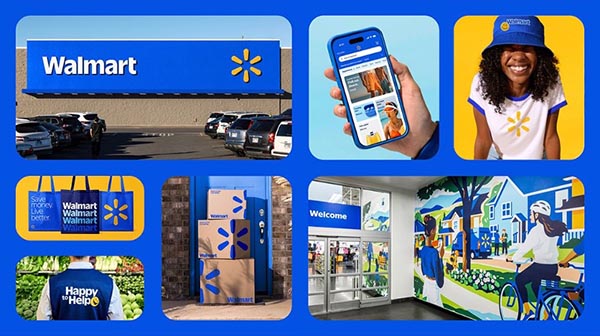You read the headline correctly. This article is not a holdover from 1999 whose document date went haywire at Y2K and skipped forward 22 years. This headline was written yesterday.
Even as we cover increasingly sophisticated digitally driven and data-driven applications, it’s important to remember that traditional business still exists. Just as we say that fewer pieces in the mailbox creates an opportunity for mailers due to less competition, so too, fewer vendors pursuing traditional business forms creates greater opportunity for commercial printers to gain what is left of that remaining viable business.
This is the point of a new white paper from Wise Business Forms, “Business Forms & Checks: Underestimated Value, Huge Opportunities for Commercial Printers.” Wise is addressing printers who, it knows, are always looking to grow their businesses and expand into new markets without having to make large capital investments. Outsourcing what might seem like a nonintuitive revenue stream (business forms) is something these vendors want to put out in front of them.
(If the discussion about print distributors sounds familiar, you might be harkening back to March 2022, when the option of outsourcing via print distributing and trade brokering was covered in the WTT article, “Looking for Business? Partnering with a Print Distributor Might Be a Good Next Step,” based on the webinar “Expanding Opportunities via Trade Brokering and Distributing” featuring Matt Bruno, executive vice president of BrandChain, formerly the Print Services and Distribution Association, and Greg Gill, incoming president of Brand Chain and current president and CEO of ThumbPrint.)
Is There Really Still Business in Business Forms? Really?
In the age of direct mail retargeting, augmented reality, and omnichannel marketing, talking about traditional printed business forms might seem completely outdated. But, as Wise points out, there are still pockets of business that require printed forms, and they will for a while. Just what might those pockets of business be? In its blog post of the same name, Wise describes seven types of businesses that still buy printed business forms:
- Those with embedded legacy systems. It’s costly and time-consuming to make a full transition to digital forms. Even if a company has begun the process, it’s most likely that it’s still in transition.
- Those with multiple locations or lots of users. Providing 100% access to digital forms can be cost-prohibitive. It is a lot less expensive to continue using paper forms than to supply every employee with an iPad.
- Those needing to accommodate an older, more traditional workforce. When a company has a high percentage of older workers, paper forms may be more efficient, less costly, and easier to adopt.
- Those with older, more traditional customer bases. Even if companies have made the transition to digital forms, they may have customers who still want hard copy. Even if that means keeping only a small quantity of forms on hand.
- Those operating in environments in which Internet access is unreliable. Notes the white paper, “Ever tried to fill out a digital form while sitting in a concrete mixing truck? Or in a rural location with spotty reception? . . . With paper tickets, employees don’t have to worry about being in a ‘no service’ area or dropping reception when they are only partway through an order.”
- Those needing physical signatures. There are some businesses that, for legal reasons, require physical signatures. This includes legal and regulatory entities, such as the IRS, for which paper is simply required.
- Those needing disaster recovery and redundancy. For many companies, the extra layer of protection from paper documentation is part of a wise and prudent disaster recovery plan.
Vertical Markets That Still Need Forms
So where do such businesses hide? A recent survey from Nextday Paper identified a number of market verticals that are heavy users of traditional business forms. Here are the top markets it found, although these are by no means the only ones:
- Heating and cooling
- Hospitals and medical offices
- Mechanics shops
- City inspector’s offices
- Transportation and moving companies
- Retail and restaurants
- Elementary and secondary schools
- Funeral homes
- Agricultural businesses
This doesn’t mean that these markets offer growing revenue opportunities. They don’t. These markets are declining. But “declining” doesn’t mean gone. There are still viable pockets of business out there, and one of the benefits of the forms industry is that once you sell into an account, that business is highly profitable. Why? Because it is also highly repeatable, and just as with any repeatable job, they tend to be highly profitable because they generate recurring revenue with little to no effort as long as you take care of that account. Especially if you are not producing those forms in-house but have outsourced the work to a business forms vendor.
They Don’t Want the Business? You’ll Take It!
Wouldn’t commercial printers just be competing with distributors who are already embedded in this market? Not necessarily. Just as commercial printers are being steered away from traditional business, print distributors are, too. They are being told—just as commercial printers are—that print is dying, and if they want to save their businesses, they need to move into other markets, such as commercial print, promotional products, and wide format. As more and more print distributors shuck their traditional forms business for more marketing-oriented jobs, this opens doors for commercial printers to pick it up. These businesses are going to need printed business forms for a while. If your clients are going to be purchasing forms anyway, why not from you?
This opportunity makes particular sense if you are already doing work for a client that buys its business forms elsewhere. Even if you are growing your commercial print business within that account, you might be able pick up their forms business , too. Think “single-source supplier.” Most accounts would prefer to work with a single trusted source than two, and it saves them money to do so. Thus, offering business forms—then outsourcing them to a vendor in this space—makes sense. You are already doing business in that account, and that forms business is still there, so why not go get it?
If you do choose to take a shot at this business, your approach will be different than you are used to. Business forms fall into the category of "operational print" because they originate, not from the marketing department (as printers are used to), but from the operations department. If you are going to pursue this business, you’ll be talking to a new group of contacts, even though they might be in companies you are already selling into. You will likely start in purchasing or procurement, for example, or possibly with the office manager.
Still a Profit-Maker
While commercial printers may not be set up to produce business forms themselves, because of the profit margins in these products, forms vendors point out that they can sell these products, outsource them to specialists in this market, and still make a great profit.
Again, this is not to say that the market for printed business forms is not shrinking. It is. However, as the white paper notes, “Even declining markets can have highly profitable niches, and that is the case here. Printed business forms, checks, and other types of operational print have highly profitable niches if you know where to look.”
For ideas on how to get started selling into this market, you can check out Wise’s white paper here.









